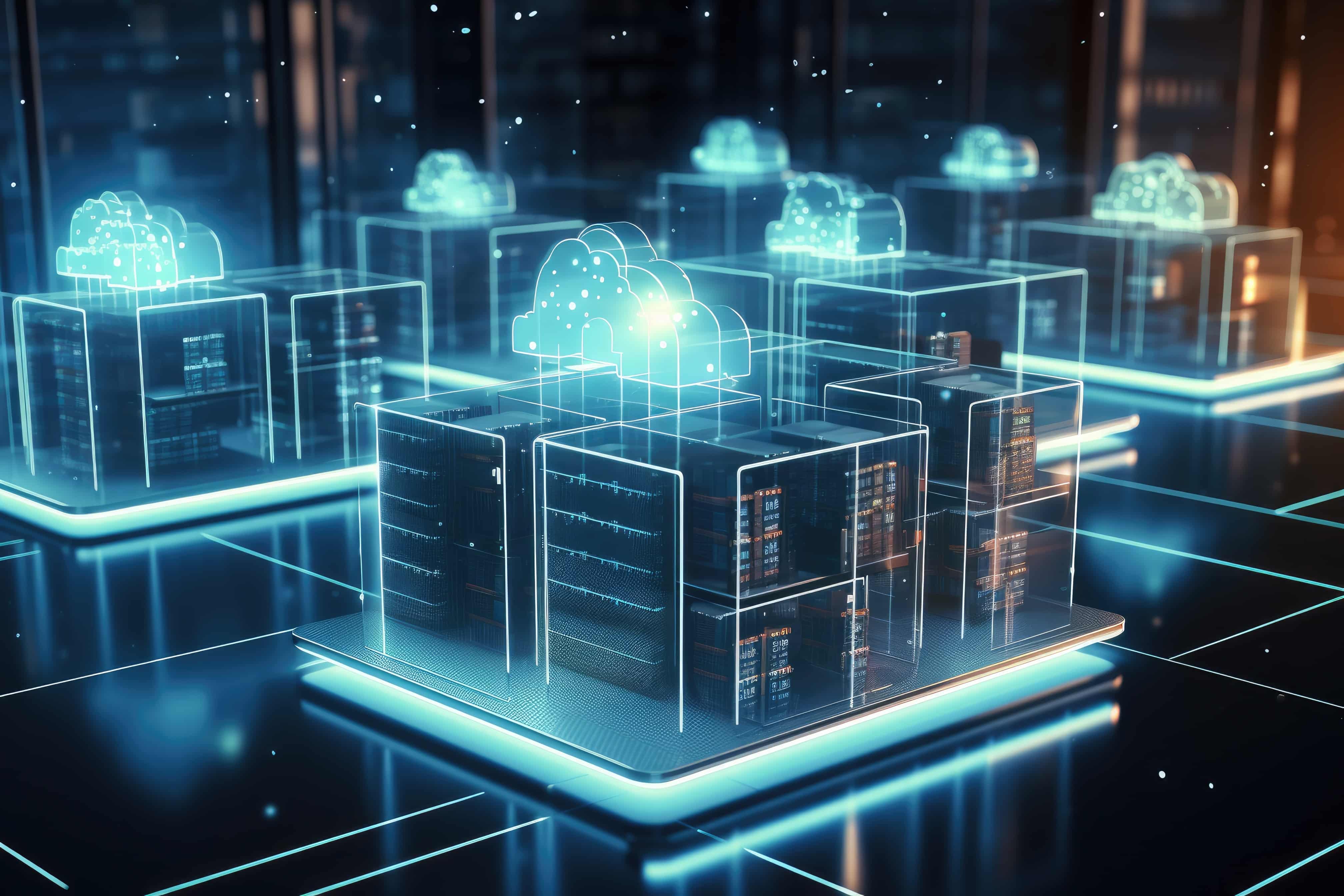Behind the scenes of our increasingly interconnected world, lie the hidden heroes of today’s data centers — environmental controls.
Data centers must be equipped with a multitude of environmental controls, ranging from electricity monitoring and thermal control to air flow and quality control and fire and leak suppression, all of which play pivotal roles in maintaining an optimal environment for data centers to operate effectively and sufficiently.
Embracing compliance regulations and standards aimed at reducing energy consumption and promoting sustainability is an essential step towards a data center’s greener future (not to mention a step towards a greener planet).
Electricity Monitoring
It’s a no-brainer that the main component of a data center’s ability to operate is electricity. In fact, it’s at the center of, well, everything we do now in the digital age.
It is also no secret that data centers are notorious for their high energy consumption, so managing their electricity usage efficiently is essential in successfully maintaining their operations. Not to mention that any disruption to the supply of electricity can lead to catastrophic consequences, such as data loss and service downtime. With electricity monitoring, data centers can proactively track their consumption and identify any service irregularities in real time, allowing facilities to mitigate risk, reduce operational costs, extend the lifespan of their equipment, and guarantee uninterrupted service delivery.
The Role of Uptime Institute’s Tier Classification in Electrical Monitoring
The Uptime Institute’s Tier Classification and electricity monitoring in data centers are intrinsically linked as they both play pivotal roles in achieving optimal reliability and efficiency. The world-renowned Tier Classification system provides data centers with the framework for designing and evaluating their infrastructure based on four stringent tiers. Tier IV is the system’s most sophisticated tier, offering facilities 99.995% uptime per year, or less than or equal to 26.3 minutes of downtime annually.
Utilizing the Tier Classifications in their electricity monitoring efforts, data centers can fine-tune their power infrastructure for peak efficiency, reducing energy waste and operating costs along the way.
Read more about the vitality of the Uptime Institute’s Tier Classification in our recent blog, here.
Thermal and Humidity Control
The temperature and humidity within a data center’s walls hold significant value in maintaining the operational efficiency, sustainability, and integrity of a data center’s IT infrastructure.
Unfortunately, finding that sweet spot between excessive dryness and high moisture levels can be a bit tricky.
According to the American Society of Heating, Refrigerating and Air-Conditioning Engineers (ASHRAE), data centers should aim to operate between 18 – 27oC, or 64.4 – 80.6 oF; however, it’s important to note that this range is just a recommendation and there are currently no mandates or compliance regulations detailing a specific temperature.
Meanwhile, AVTECH Software, a private computer hardware and software developer company, suggest a data center environment should maintain ambient relative humidity within 45-55%, with a minimum humidity rate of 20%.
Thankfully, due to the exponential rise in data centers over time, there are countless devices available to monitor both temperature and humidity levels.
Striking the right balance in thermal and humidity levels helps safeguard the equipment and maintain a reliable, stable, and secure data center environment. Efficient cooling systems help optimize energy consumption, reducing operational costs and environmental impact, whereas humidity controls prevent condensation, static electricity buildup, and electrostatic discharge, which can damage the more delicate components.
Air Flow Management and Quality Control
Here’s a question for you: ever be working late on your laptop with a bunch of windows and programs open, and it starts to sound like it’s about to take off for space?
That means your laptop is overheating and is lacking proper airflow.
Air flow management and air quality control serve as two sides of the same coin: both contribute to equipment reliability, energy efficiency, and optimal health and safety for operators.
Air Flow Management
Regardless of their scale, when data centers lack proper airflow management, they can easily become susceptible to hotspots. Hotspots are areas within data centers and similar facilities that become excessively hot from inadequate cooling, ultimately leading to equipment overheating, potential failures, and, even worse, fires. Not only that, but inefficient air flow results in wasted energy and money and requires other cooling systems to work overtime.
By strategically arranging specially designed server racks, implementing hot and cold aisle containment systems, and installing raised flooring, data centers can ensure that cool air is efficiently delivered to all their server components while hot air is effectively pushed out. While meticulous and stringent, this level of management prolongs the lifespan of expensive hardware and gravely reduces energy consumption, resulting in significant cost savings and environmental benefits.
Air Quality Control
Airborne contaminants, such as dust, pollen, and outside air pollution, can severely clog server components and obstruct airflow, leading to equipment overheating and failures and eventually other catastrophic consequences. Not to mention, chemical pollutants from cleaning supplies and other common contaminants such as ferrous metal particles from printers and various mechanical parts, concrete dust from unsealed concrete, and electrostatic dust all play a role in corroding sensitive and critical circuitry.
Air quality control systems, including advanced air filtration and purification technologies, help maintain a pristine environment by removing these airborne particles and contaminants. These additional systems allow facilities to extend their server and network equipment lifespans, operate at peak efficiency, and reduce the frequency of costly replacements and repairs, all while contributing to data center reliability and data security.
Fire Suppression
The significance of fire suppression in data centers lies in the ability to quickly and effectively prevent and combat fires, ultimately minimizing damage and downtime. Due to the invaluable data, assets, and infrastructure within data centers, these suppression systems are designed to detect and put out fires in their earliest stages to prevent them from spreading and escalating.
Data centers use a variety of cutting-edge technologies such as early warning smoke detection, heat sensors, water mist sprinkler systems, smoke and fire controlling curtains, and even clean agents like inert gases, which leave no residue, thus further safeguarding the integrity of the sensitive equipment.
Causes of Fires in Data Centers
Electrical failures are the most common cause for data center fires, and often stem from overloaded circuits, equipment malfunctions, and defective wiring. They can also be started by electrical surges and arc flashes, otherwise known as an electrical discharge that is ignited by low-impedance connections within the facility’s electrical system.
Lithium-ion Batteries have a high energy density and are typically placed near a facility’s servers to ensure server backup power in the case of a main power failure. However, lithium-ion batteries burn hotter than lead-acid batteries, meaning that if they overheat, their temperature can trigger a self-perpetuating reaction, further raising the batteries’ temperatures.
Insufficient maintenance such as failing to clean and repair key data center components, such as servers, power supplies, and cooling systems can quickly lead to dust and particle accumulation. Dust, particularly conductive dust, when allowed the time to build up on these components, can potentially cause short circuits and overheating, both which can lead to a fire.
Human error is inevitable and can play a large part in data center fires and data breaches, despite all of the advanced technologies and safety measures in place. These types of errors range from improper equipment handling, poor cable management, inadequate safety training, overloading power sources, and more.
Leak Detection
Remember when we said that it is no secret that data centers are notorious for their high energy consumption? The same can be said for their water usage.
On average, data centers in the U.S. use approximately 450 million gallons of water a day in order to generate electricity and to keep their facilities cool. Any kind of failure within a data center’s cooling system can lead to a coolant leak, which can further lead to catastrophic consequences, such as costly downtime, data loss, and irreparable damage to their expensive equipment.
Leak detection systems’ role is of extreme importance in safeguarding data centers because they promptly identify and alert facility staff to any leaks that can cause water damage to critical servers, networking equipment, and other valuable assets. Raised floors also act as a protective barrier against potential water damage, for they keep sensitive equipment elevated above the floor, reducing the risk of damage and downtime.
The Role of SEM
Data centers operate in controlled environments and have state-of-the-art air quality and flow management systems to achieve equipment reliability, energy efficiency, and optimal health and safety for operators. This much we know.
What we also know is just how important in-house data decommissioning is to maintaining data security. In-house data decommissioning is the process of securely and ethically disposing of any data that is deemed “end-of-life,” allowing enterprises to keep better control over their data assets and mitigate breaches or unauthorized access.
So, how does in-house data decommissioning play into a data center’s environmental controls?
Well, the process of physically destroying data, especially through techniques like shredding or crushing, can often release fine particle matter and dust into the air. This particle matter can potentially sneak its way into sensitive equipment, clog cooling systems, and degrade the facility’s overall air quality, like we discussed earlier.
At SEM, we have a wide range of data center solutions for the destruction of hard disk drives (HDDs) and solid state drives (SSDs) that are integrated with HEPA filtration, acting as a crucial barrier against airborne contaminants. HEPA filtration enhances air quality, improving operator and environmental health and safety.
Conclusion
Temperature and humidity control, air quality and airflow management, fire suppression, and leak detection all work together to create a reliable and efficient environment for data center equipment. Combined with stringent physical security measures, power and data backup regulations, compliance mandates, and proper documentation and training procedures, data center operators can ensure uninterrupted service and protect valuable data assets.
As technology continues to evolve, the importance of these controls in data centers will only grow, making them a cornerstone of modern computing infrastructure.




